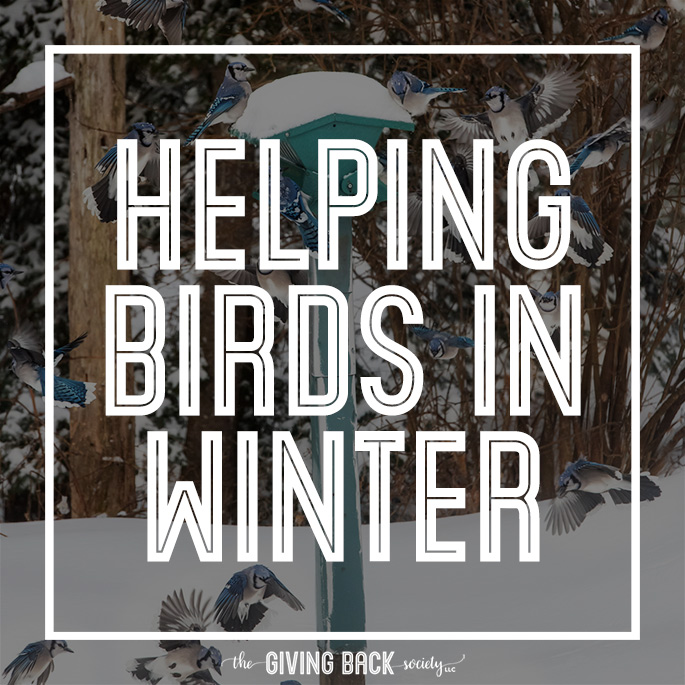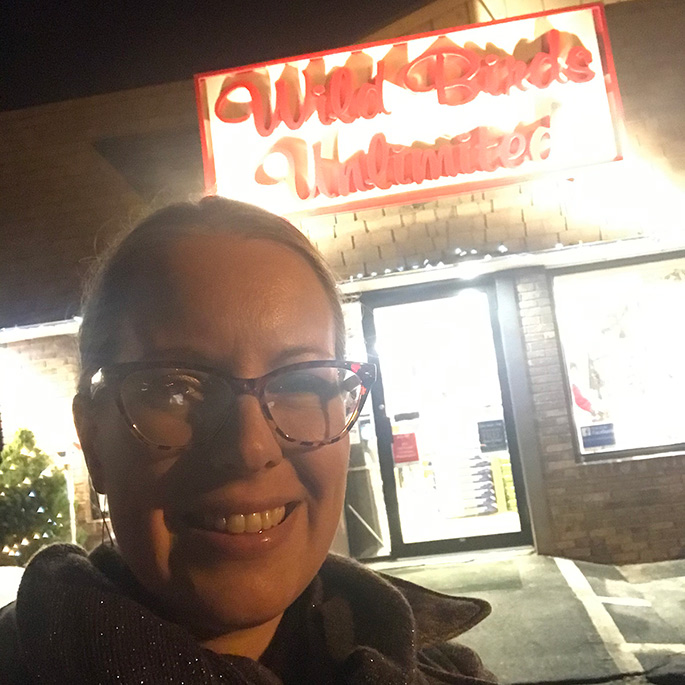HELPING BIRDS IN WINTER
Last night I went to a presentation about how to help backyard birds in the winter. To be honest, it sounded interesting to me, but I didn’t realize how much of a call to action is actually needed for our feathered friends.

The presentation, which was hosted by Wild Birds Unlimited, was a joint program with Connecticut Audubon Society’s Roger Tory Peterson Estuary Center. The speaker, Joe Attwater, was engaging and very knowledgable. The time certainly flew by! (No bird pun intended there, lol.)

So, onto the good stuff with regards to what I learned, but more importantly, what we can do to help!
I don’t know about you, but when I hear about endangered birds, I think of the bigger, grander birds that have national efforts behind their conservation. But, it turns out that birds are on the decline here in North America, all the way down to the small songbirds (which, truth be told are my favorites anyhow):
“…a recent groundbreaking study published in Science magazine found that North America has experienced a 29 percent drop in its overall population of birds since 1970.”
(Source.)
“There are 3 billion fewer birds today in the United States and Canada than there were 50 years ago, according to a team of scientists from the Cornell Lab of Ornithology and elsewhere.”
(Source.)
The reasons for this decline vary, of course, but there are three big factors that were discussed at last night’s presentation: habitat loss, outdoor cats and window collisions. And the good news is that there are things we can do about all of these issues, in addition to simply feeding the birds, which I’ll get into more in a minute.
With regards to habitat loss, we think of big developments and cutting down forests, but there are smaller changes we make to help the birds. We chatted last night about creating areas in our yards from brush that birds can protect themselves from predators — this could be your old Christmas tree, for example. Toss it in your backyard instead of onto the curb for pickup. We also talked about adding native plants to our yards, not only protection, but also as a food source. (The National Audubon Society has a native plants database.)
As for outdoor cats, well, if you know me then you’ll know my stance on this one — the best way to help the birds is to keep your cats indoors! Keep in mind that the average life expectancy for an indoor cat is 14, but for outdoor cats it’s only 5. So, really, it’s in the cat’s best interest, too! #SaveThemAll
Lastly, for window collisions, Joe recommended window decals. They even make cute seasonally-themed ones now! He also mentioned something really interesting — the distance that your bird feeder is from the window matters — it can either be close (5 feet-ish away) or far away (like 30 feet). It’s the in-between distances that put the birds at highest risk. Really good to know!
Of course, then he dug into detail about feeding our backyard birds. It turns out that you want a high fat diet in winter for them (versus a high protein diet in spring and summer). It shocked me to learn that birds can lose 10%-25% of their body weight on a single (very) cold night! So, you want high fat foods like suet and winter seed blends.
And a few other tips — keep your feeders clean and don’t forget to offer water as well!
Last night turned out to be both enjoyable and interesting, as I had hoped it would be. While I already do feed my backyard birds daily, I hadn’t grasped the importance of it with regards to the big picture and the overall decline they are going through. I may only be helping the 30 or 40 birds who visit, but if we all play our part, those numbers add up!
#HelpingBirdsInWinter #GivingBack #ConnecticutAudubonSociety #WhatsYourCause?
